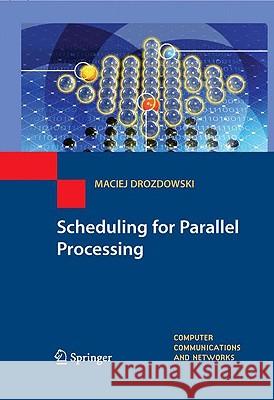Scheduling for Parallel Processing » książka
Scheduling for Parallel Processing
ISBN-13: 9781848823099 / Angielski / Twarda / 2009 / 386 str.
Scheduling for Parallel Processing
ISBN-13: 9781848823099 / Angielski / Twarda / 2009 / 386 str.
(netto: 384,26 VAT: 5%)
Najniższa cena z 30 dni: 385,52 zł
ok. 22 dni roboczych
Bez gwarancji dostawy przed świętami
Darmowa dostawa!
Overview and Goals This book is dedicated to scheduling for parallel processing. Presenting a research ?eld as broad as this one poses considerable dif?culties. Scheduling for parallel computing is an interdisciplinary subject joining many ?elds of science and te- nology. Thus, to understand the scheduling problems and the methods of solving them it is necessary to know the limitations in related areas. Another dif?culty is that the subject of scheduling parallel computations is immense. Even simple search in bibliographical databases reveals thousands of publications on this topic. The - versity in understanding scheduling problems is so great that it seems impossible to juxtapose them in one scheduling taxonomy. Therefore, most of the papers on scheduling for parallel processing refer to one scheduling problem resulting from one way of perceiving the reality. Only a few publications attempt to arrange this ?eld of knowledge systematically. In this book we will follow two guidelines. One guideline is a distinction - tween scheduling models which comprise a set of scheduling problems solved by dedicated algorithms. Thus, the aim of this book is to present scheduling models for parallel processing, problems de?ned on the grounds of certain scheduling models, and algorithms solving the scheduling problems. Most of the scheduling problems are combinatorial in nature. Therefore, the second guideline is the methodology of computational complexity theory. Inthisbookwepresentfourexamplesofschedulingmodels. Wewillgodeepinto the models, problems, and algorithms so that after acquiring some understanding of them we will attempt to draw conclusions on their mutual relationships.











